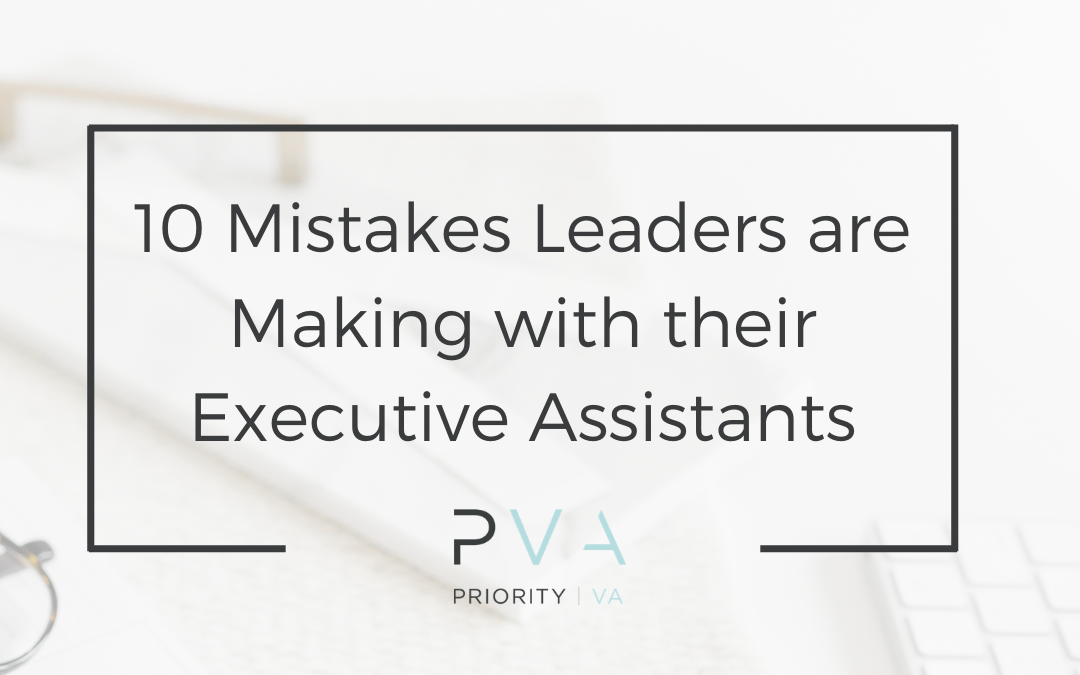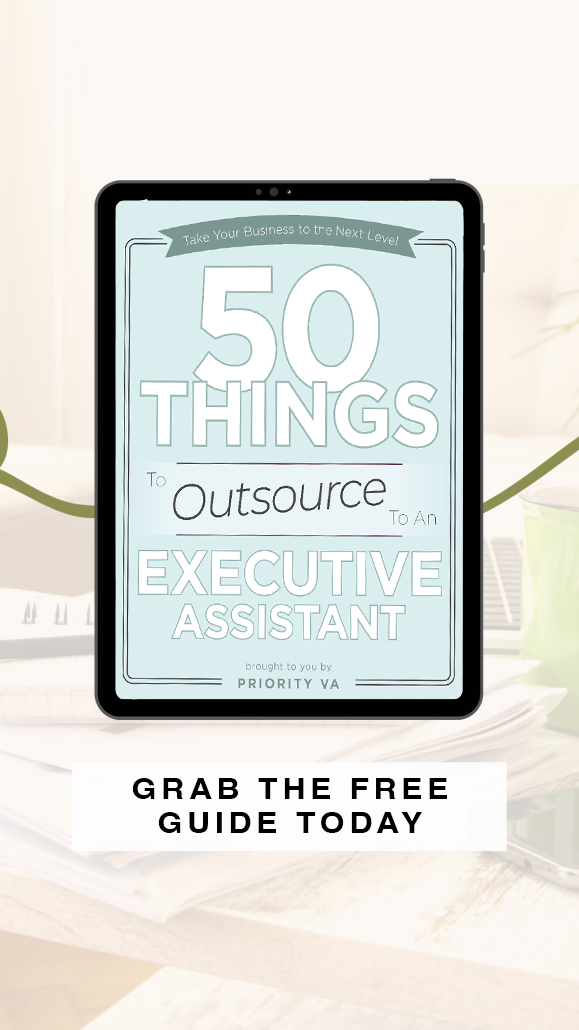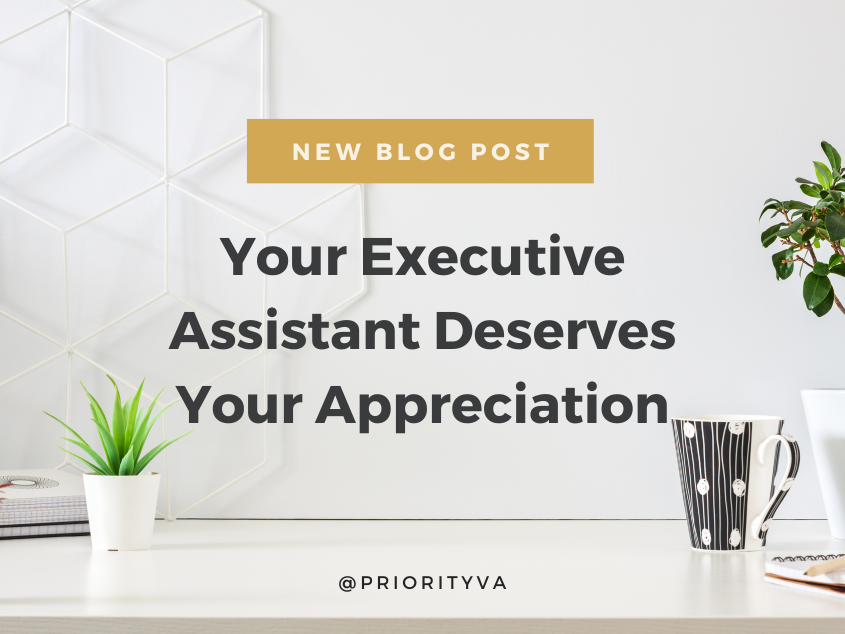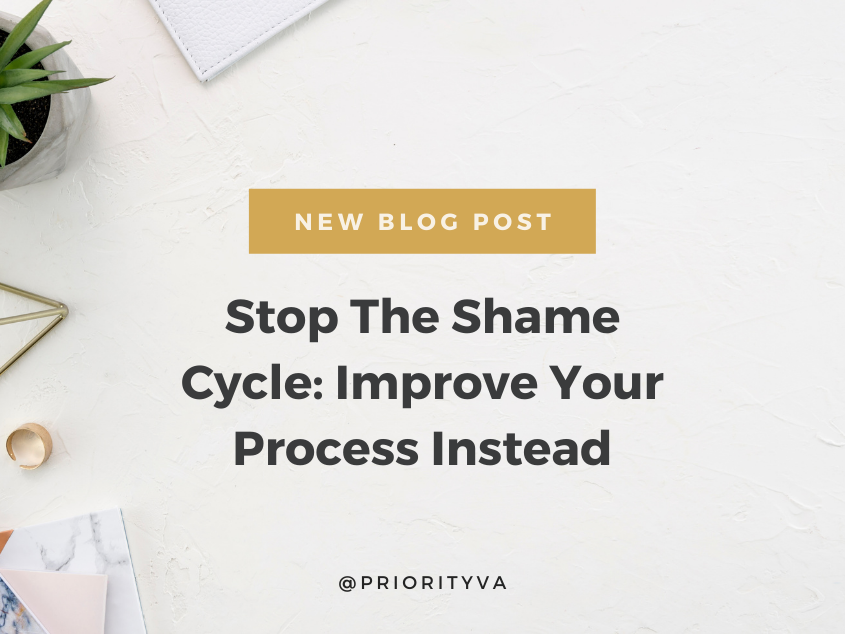My career started as an Executive Assistant at the ripe age of 18. I got hired at an adult daycare facility for Alzheimer’s patients in Colorado. Since then, I have worked as an EA for more than 20 years.
I always say that being an EA made me the leader I am today because I have been the grunt work person. I’ve been up till 2 and 3 in the morning preparing for a course launch while the CEO has signed off.
I’ve been “just” the assistant. The one treated like a task rabbit, who is belittled by her superior. I’ve been the gatekeeper to a CEO – the one to tell customers and team members “no” they are not available. I’ve also been the gateway, the person who is empowered to step in and help people on behalf of the CEO as a trusted partner.
Every relationship between an EA and an Executive is unique. That’s a good thing, because everyone needs something different to thrive. That said, I think there are boundaries and expectations that are important to have in place for the relationship to thrive. I also think both parties need a healthy understanding of the other and how their world works.
It might make you uncomfortable to think about an EA as trusted PARTNER, instead of “just” as an administrative assistant. There are so many misconceptions about how an EA can actually serve and the partnership suffers for it.
At Priority VA, we serve both sides of the relationship. We mentor the CEO and the EA so they can both thrive.
I want to highlight the 10 mistakes leaders make every day with their EAs. If you are an EA reading, don’t worry, I’ll give you tips for how to bridge the gap with your leader if you can relate to any of the items on this list.
#1 – You don’t respect their boundaries
There is a reason Andy Sachs threw her cellphone into the fountain in Paris when Miranda Prietsly called yet again, in The Devil Wears Prada. Miranda is a powerful editor-in-chief of a New York fashion magazine and Andy is her executive assistant. After missing countless important life events and working around the clock…Andy had a limit…and quit.
An EA’s job is to serve you and make your life easier, but not at the expense of their sanity and their life. If you expect an EA to be on-call, 24/7…that needs to be stated explicitly. The mistake too many Execs make is not defining the boundaries of the relationship.
If you send your EA an email at 9 p.m., are they required to respond? Or can the answer wait until morning? How quickly must they respond to a text? What form of communication is considered urgent vs. what is important…but can wait?
The same goes for time off and travel. Is an EA allowed to fully unplug, or is there an expectation that even when they are out of the office, you may contact them in an emergency? Set these parameters very explicitly for your EA so they know how to best show up for you. Likewise, this teaches them how to respect YOUR boundaries and serve as a gateway between other people and you.
Boundaries is an area I have seen the most toxic behavior between an Exec and an EA. If you’re working in a toxic environment where your Exec calls you names, requires you to answer texts late at night, requires you to redo work or is disrespectful of your boundaries after a discussion…it might be time to leave the partnership.
A majority of the time though, I think most people want to be better humans. They want to learn from their mistakes and, if given a chance, will correct their behavior that’s inappropriate. Usually, they simply don’t know what else to do. Most likely, as the EA, it’s not about you. It’s about the CEO’s own insecurities or fears. If you as the EA can get them talking, you can find out what is REALLY going on. There is a great book I recommend called the Question Behind the Question — it helps you get to the root of the problem. Once that is figured out, you can solve the problem together, as a team.
#2 – You don’t define what success looks like
Rectifying this mistake will save you a lot of frustration. If you assign a project or hand-off an outcome to an EA, you need to be super clear on what success looks like for a couple reasons. It tells the EA if you want something done how YOU would do it, or if they have freedom to tackle the assignment how THEY would do it.
One of the biggest complaints founders have with their team is they feel they could do a better job. This frustration, if not dealt with, causes founders to take work BACK that they had originally assigned. Then, they resent that work is back on their plate. That resentment may cause a leader to lead with passive aggression…which results in not taking meetings with their EA or team members and not delegating more work.
I call this vicious cycle the sick cycle carousel of frustration. It happens more often than you think. It leaves EAs in the dark, not knowing why work isn’t being assigned to them. All the while, the CEO is spinning her wheels, getting more and more upset that they can’t trust their team to deliver on their expectations. They don’t realize though, that they never outlined their expectations to begin with.
Here’s what to do instead. When you hand off a task, project or outcome, tell your EA if you want it done how YOU would do it, or if they have freedom to approach it in the way it works for them.
If you have a specific process to follow, document it. Record a screencast of you tackling the work so your EA can memorize the steps and follow your example.
If you are less particular about how the work gets done, but still have standards for success…communicate those parameters. I call this giving your EA the frame, but allowing them to paint the canvas.
Take travel for example. You have an important event in New York on a Saturday. You need your EA to book your tickets. What are your preferences? Do you have a preferred airline? Do you like window or aisle seats? Would you get on a redeye, or refuse to fly before a certain time in the morning? How much time do you need to settle in before the event? How much downtime do you want after the event before coming back home?
If these sorts of details are important to you, document and share what you can so your EA can meet or exceed your expectations when preparing an itinerary. Otherwise, you can’t be angry with what your EA puts together if you never defined the frame for them!
For recurring responsibilities – like booking travel or lodging or buying gifts on your behalf for clients and team members – I recommend putting your preferences on paper.
Create a living document that outlines that you always prefer non-stop flights on United and are a Hilton rewards member and need to stay in their hotels. Or, that if you are going to have flowers sent on your behalf, you prefer these florists and want to see a picture of the arrangement before it is sent.
Define what success looks like — and feel less frustrated in the process!
#3 – You don’t want to be bothered by them
Many of us want the help of an EA, but aren’t interested in the work that goes into nurturing the relationship for it to be successful. I think some Execs think that they simply need to hire and delegate and that the relationship can run on autopilot.
That’s not the case. Honestly, this dynamic reminds me of the CEOs I worked with who wanted an EA who was a gatekeeper… the bouncer at the door keeping them off limits to the rest of the company or the clients. That included limited interaction with me as the EA.
I don’t like this dynamic because it is superior and subordinate. It’s seeing the EA as below you, not worthy of your time. In reality, I believe the interplay between an EA and an Executive is a lot like a marriage. There needs to be healthy communication and expectation setting so EAs can serve you.
In time, if you put in the work, you will have an EA who can come close to reading your mind. At the very least, they will know how to anticipate your needs. If you don’t want a lot of back-and-forth during the day…that’s fine. But don’t expect that kind of dynamic right away. That level of awareness takes time to cultivate. But it is possible!
More practically, if you are hellbent on only being contacted at certain times…this comes back to boundaries doesn’t it? Indicate on your calendar when you are open to hearing from your EA with questions or concerns. Maybe you’d rather be emailed with their roadblocks instead of called or visited in the office. Communicate those preferences so you don’t feel as disrupted.
Remember, the better you know yourself — your likes and dislikes and preferences — the better your EA can know you and serve you.
If you are an EA and feel tension every time you interact with your Leader…gently ask them about it. Ask, “Are mornings a good time for me to come to you with questions like this? Or would you prefer a different time during the week? Also, would you rather this be an email in the future?” Probe and see what kind of feedback you get.
#4 – You don’t lead (do as I say, not as I do)
Ugh, this is a pet peeve in general…not just with EAs specifically! I am not a fan of Leaders who have a “do what I say, not as I do” approach. I don’t like this because Leaders set the tone of a company. This attitude says they do not play by the same rules as everybody else on the team. They are the exception. It also shows a lack of self awareness in my opinion.
If everyone else has to document processes…but you as the Leader refuse to…why is it a value or expectation of others? I always say, culture is something that’s IN YOU already. If you can’t deliver on your own expectations, it’s clearly not that important to you.
Now, that’s not to say you can’t be striving to improve in an area you know is important. If you struggle to get to meetings on time and do your best but are a work in progress…that’s one thing. But to blatantly disregard the expectation of timeliness is selfish.
Here’s why it’s a mistake for your EA. Your actions set the tone for how your EA should interact with you. When your expectations don’t match with your own behaviors, you are sending a mixed message for how your EA can act as an extension for you. We will talk about that in the next point more in depth, but your EA needs to be able to get inside your head and think how you think.
They are striving to answer, “How would Trivinia solve this problem?”
You as the Leader need to LEAD by example. This sets your team, more specifically your EA, up for success. You must model behavior that you want your crew to emulate. That goes for your attitude, as well.
#5 – You don’t give them authority to act as an extension of you
Here is a continuation of point #4. A common mistake of Execs is NOT giving their EAs authority to act as an extension of them.
I’ve said this term a couple times today but I think an EA should be a gateway to an Executive…not a gatekeeper. I liken a gateway to Grand Central Station, filtering people where they need to go to get information as quickly as possible.
That means the EA can speak on the Leader’s behalf to get someone an answer, great. If it means the person really does need to speak with the Leader…they are allowed to do that.
The key here is the EA has AUTHORITY to speak on your behalf if necessary. The truth is, most issues can be resolved by your EA without having to loop you in. This protects your time and creates greater efficiency.
If you find yourself micromanaging your EA…they likely don’t have authority to act as an extension of you. They feel like they can’t move without your approval…so they often don’t. This keeps you in the weeds when you need to be guiding strategy, closing sales or dreaming up your next big audacious goal. This keeps you out of your genius work!
If you’re scared to empower your EA to act on your behalf, it’s possible you haven’t practiced setting expectations. You haven’t shared that standard for success.
There is something very beautiful about setting a standard for your EA but then empowering them to do things as they see fit on your behalf. The results may surprise you.
I once had a client who needed to get an email out. She was running behind, so I offered to start something for her so she didn’t have to look at a blinking cursor.
When she read the email I drafted, she said “you wrote this?” – because she had no idea I could write at all.
That day, my client discovered a hidden talent in me, because she’d created a container for me to experiment, to play in and to challenge myself in. She empowered me to take ownership of my role and benefited from that.
EAs listening out there…I encourage you to use your voice here. Sometimes, an Exec doesn’t empower in a certain area because they don’t know you’re up for the task. For example, if your founder feels swamped because they need to write a blog, email and social media copy….and you feel capable to tackle one of those tasks…pitch it this way.
Volunteer to write the social media copy based on the blog she drafts. Offer to let her review the copy before it’s posted live to help save her time. In time, you may find she gives you more and more copywriting tasks.
#6 – You delegate the wrong things (don’t know the value of your time)
There is a trick to figure out the value of your time. Write down all of the tasks you do in a week. Itemize your responsibilities. It’s ok if the list is long. Then, take your weekly salary and divide it by the items on that list. That is the average cost of your time, per task.
This is such a sobering way to see where you truly waste your time….because you see what is absolutely not worth your time! Is blocking your calendar worth $99 an hour? Not likely! Is it worth it for you to spend two billable hours writing social media copy, when that time could be used crafting a signature talk or doing something ONLY YOU can do? Nope!
Figure out the true value of your time, then get hyper critical of what stays on your plate. I hear all the time that EAs want their Execs to assign them more than they do. Depending on your EAs background, they likely have expertise beyond administrative duties. Many of them have former backgrounds in business, marketing, communications or bookkeeping. Leverage that experience and lighten your load.
If you are still being hesitant, sort your responsibilities into four categories: what ONLY you can do, what you don’t have time to do, what you don’t like doing, and what you don’t know how to do.
Dissect your schedule and see where you are wasting precious time and resources!
#7 – You hire without an ideal team avatar.
I am so excited to talk about this. As business owners, we talk so much about our ideal customer persona. We think long and hard about this person. A persona is a semi-fictional representation of your ideal customer based on research, data and experience. They help guide your marketing, messaging and targeting.
Why then, don’t we do the same for prospective team members? Why do we hire Executive Assistants without an ideal team avatar? The mistake here is that we spend so much time figuring out WHAT we want help with that we never consider WHO we want next to us doing the work.
I said before, an EA and an Executive’s relationship is like a marriage. Not every couple is compatible, no matter how competent they are in certain skills.
We are so passionate about the ideal team member avatar that we created a video training with downloadable template. Learn more about how the Ideal Teammate Avatar will transform your hiring process by helping you identify WHO you need, not simply WHAT you need help with.
#8 – You don’t have an adequate feedback loop
An EA’s work should never exist in a silo. There needs to be consistent feedback from you as the Executive if they are hitting the mark. My favorite way to create feedback, or a feedback loop, is through weekly meetings.
At Priority VA, we advise EAs meet with their Executive on Mondays. During this meeting, the EA will talk about what they accomplished the week before, what they will work on the week ahead and any roadblocks standing in their way.
The purpose of this meeting is to increase transparency about what the EA is actually getting done. If you ever wondered how your EA spends his or her time…this is your chance to find out.
Now here’s the kicker, it’s your job to course correct. If your EA isn’t hitting the mark, this is the time to tell you. Better yet, it’s your job to figure out if there is a reason they are or aren’t meeting or exceeding your expectations.
Is there a training gap? Are your preferences unclear? Prioritize this meeting and come prepared with how you would like to see your EA’s performance improve. This is yet another way to prevent the sick cycle carousel of frustration.
The best part of this weekly meeting is that it comes with a part two. You and your EA meet on a Monday, but then your EA will send you a Friday wrap-up email. The purpose of this email is to close the loop on the week.
They discuss what they accomplished this week, what they are looking ahead to tackle the next week and any outstanding items that require your attention or help to solve.
Between the Monday meeting and Friday email, there is ample opportunity to give feedback to your EA and likewise…receive feedback from them!
#9 – You treat them like a task rabbit
Do you hand off tasks to your EA one by one? Are they coming back to you frequently with more to do? Or do you wonder how they actually spend their time, and feel like giving them things to do is a drain on YOUR time?
Congratulations…you might be treating your EA like a task rabbit!
I champion outsourcing outcomes, not tasks. An outcome is “manage my email.” A task is “send this email.” Your goal as an Executive is to delegate outcomes not just tasks.
Outcomes indicate a level of ownership with your EA to act on your behalf. Do you see how all of these pieces are fitting together? If you set groundwork for your EA to take over entire outcomes, you free up tremendous time in your schedule.
If you focus on delegating only tasks, the EA is dependent on you for the next task, and then the next one and the next one. There is less autonomy and you will feel bogged down in the weeds.
Which leads me to point number 10.
#10 – You don’t work with them as a trusted partner
For a while, we actually considered remarketing “Executive Assistant” as an “Executive Business Partner” at Priority VA. We feel that strongly about the relationship!
Your EA is not a task rabbit. They are not “just” a secretary. They are trusted partner. What does it mean to trust your EA? It means they are empowered and equipped to rise to the occasion, to take over projects you would normally be stuck doing. They can represent you in your absence and they can learn to read your mind.
This is freaking priceless, guys.
The bottom line is this. What you put into your relationship with your EA is what you get out of it. If you think of your relationship with your EA as an investment of your time, empowerment, encouragement and example…you will see far greater returns in their partnership with you.
It’s my hope that Executives and their Assistants can feel like co-creators of their work environment where both parties thrive and respect each other’s boundaries.
This was a quick and dirty list meant to help you see just where your relationship with your EA is falling short and where it can grow to improve. As a former EA myself, I feel so passionate about how Execs can get the most from this important relationship and partnership.
With that, let’s recap the 10 mistakes leaders make with their Executive Assistant’s every day.
#1 – You don’t respect their boundaries
#2 – You don’t define what success looks like
#3 – You don’t want to be bothered by them
#4 – You don’t lead (do as I say, not as I do)
#5 – You don’t give them authority to act as an extension of you
#6 – You delegate the wrong things (don’t know the value of your time)
#7 – You hire without an ideal team avatar (is this something we have?) – you know what you want help with but not WHO you want next to you
#8 – You don’t have an adequate feedback loop
#9 – You treat them like a task rabbit
#10 – You don’t work with them as a trusted partner
The relationship with your EA doesn’t have to stay this way. Even small changes will improve your partnership and keep you both moving forward. I challenge you to take that step so you can experience the fullness of this strategic partnership.





